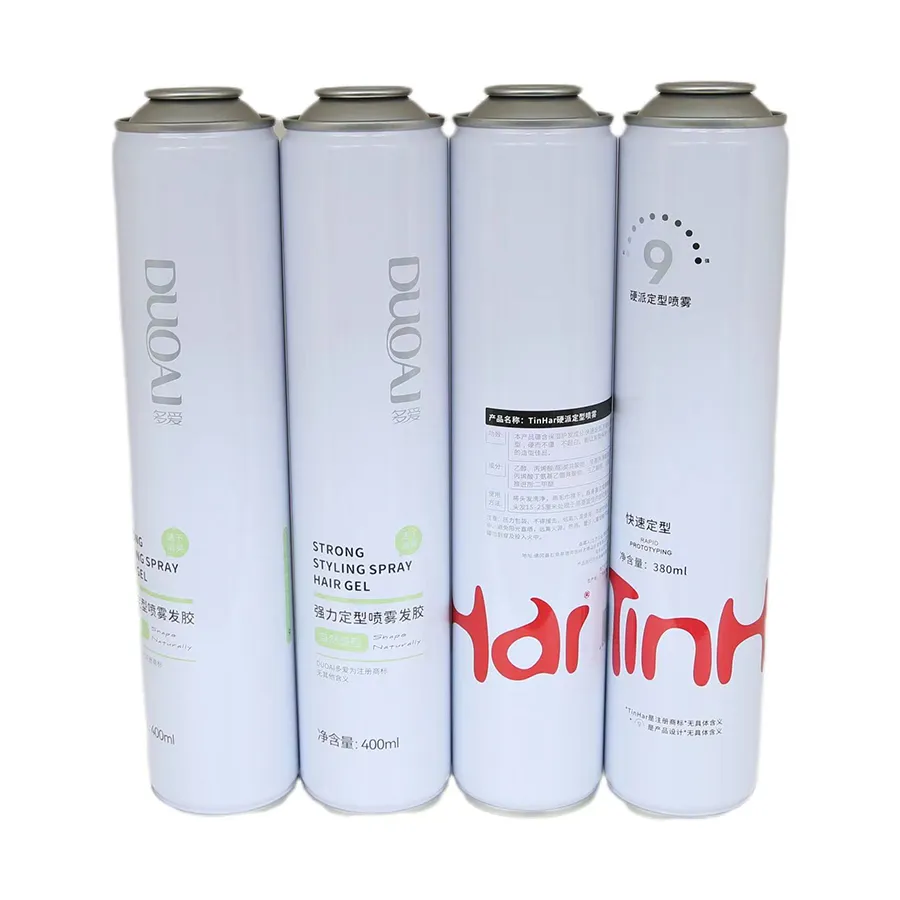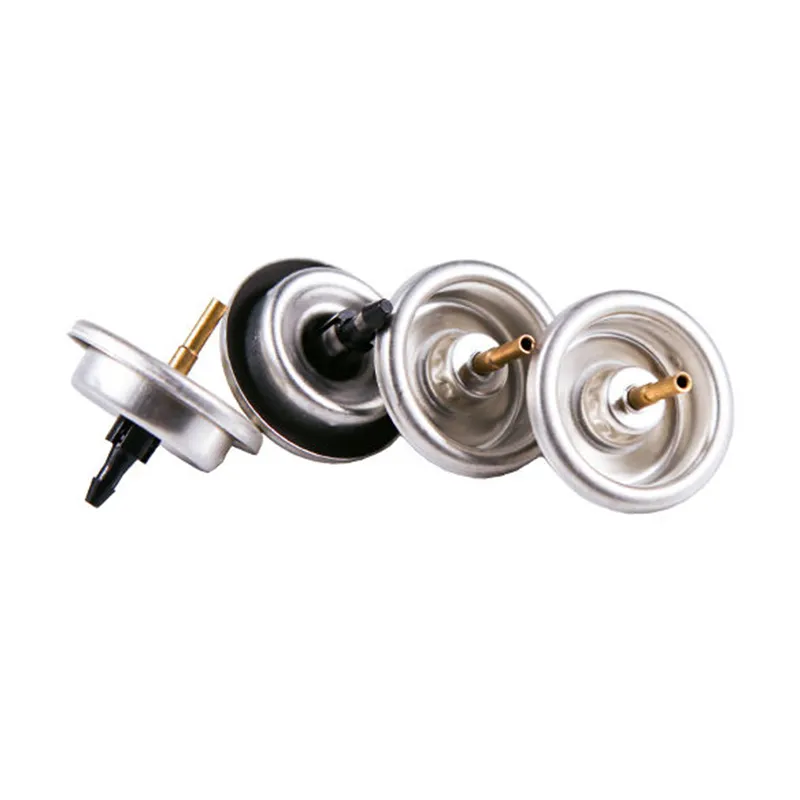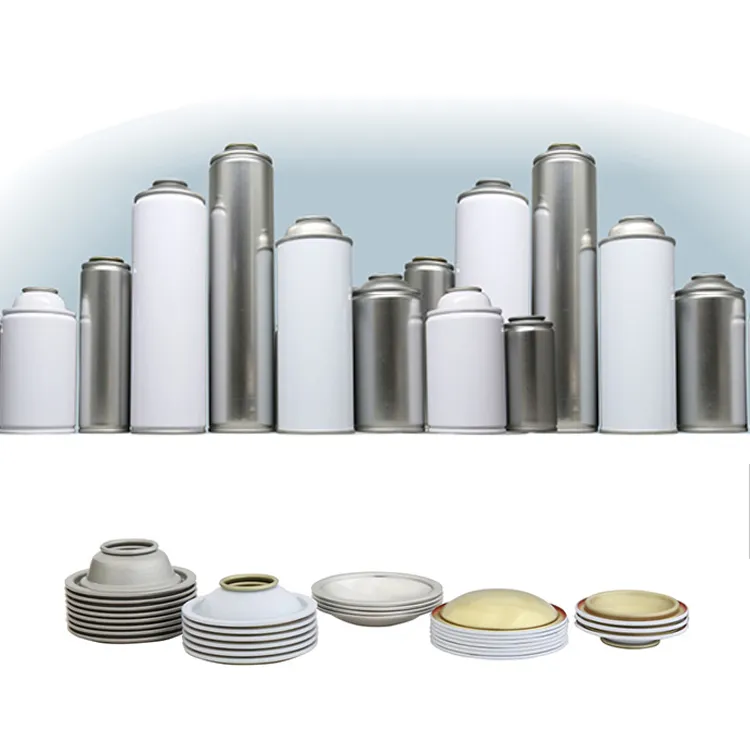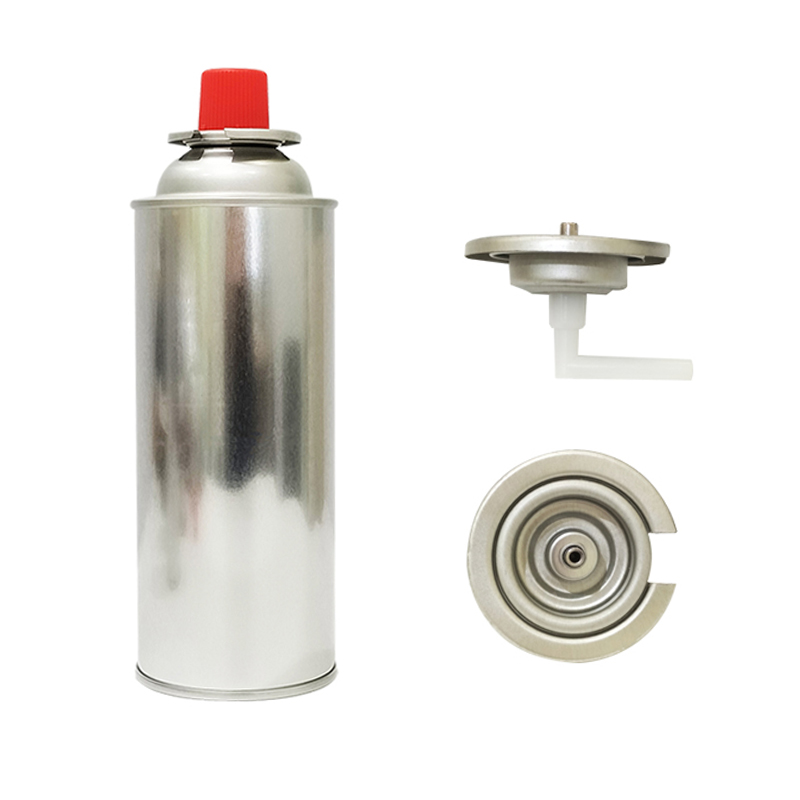In daily life and industrial production, three-piece aerosol cans are a common aerosol container, widely used for spray paint, insecticides, lubricants, cleaners, cosmetics, and other applications.
Many people who use three-piece aerosol cans will notice a small metal ball inside that makes a noise when shaken. This metal ball is not just a decoration, but an integral component of the can's functional design.
This article will analyze the function, operating principle, design significance, and safety and quality management of the metal ball in three-piece aerosol cans from a professional perspective to help readers fully understand the scientific principles behind it.

Three-piece aerosol can: What is it?
A three-piece aerosol can is a sealed metal aerosol container consisting of a can body, base, and valve assembly. It is typically made of tinplate or tin-plated steel and is pressure-resistant, airtight, and corrosion-resistant. Compared to two-piece or four-piece aerosol cans, the three-piece aerosol can design is more suitable for medium-volume consumer products that are easy to manufacture and use.
A three-piece aerosol can consists of three main parts:
• Container Body: Typically made of tinplate or aluminum, it offers high strength, corrosion resistance, and excellent sealing properties. It is used to contain liquid products and compressed gas.
• Cap/Valve Assembly: Located at the top of the can, it controls the opening and closing of the spray and is the core component of spray control.
• Seam/Bottom Plate: Welded or sealed to the can body, it ensures the can's seal and pressure resistance.
In three-piece aerosol cans, a metal ball is often placed inside the can to produce sound as the liquid moves within. This design is technically known as a mixing ball, agitation ball, or agitation ball.
What is the function of the metal ball in a three-piece aerosol can?
The metal ball's design is not arbitrary; its main functions include the following:
1. Improve liquid uniformity
A three-piece aerosol can contains liquid product and a propellant gas (such as butane, propane, or carbon dioxide). When liquid and gas coexist, prolonged standing can cause separation or precipitation of components. A metal ball, when shaken, thoroughly agitates the liquid in the can, ensuring uniform mixing of the different components and consistent liquid concentration and composition during spraying. This is particularly important for spraying paints, cleaning agents, or cosmetics, ensuring consistent results.
2. Prevents precipitation from clogging nozzles
Liquid products often contain pigments, active ingredients, or particulate matter. Without agitation, precipitation can accumulate at the bottom of the can, leading to nozzle clogging. A metal ball continuously rubs against the can walls and the liquid surface during shaking, reducing precipitation and ensuring smooth spraying.
3. Improves the user experience
The sound produced by the metal ball when shaking the can indicates to the user that the liquid is thoroughly mixed, helping them determine whether the mixture is thoroughly mixed. This serves as an intuitive reminder for both home and industrial use, improving convenience and accuracy.
4. Assisting Foam Generation (for Specific Products)
Some spray products (such as foaming cleansers, shaving foams, and makeup foams) require the liquid in the can to form foam or mist upon spraying. Metal balls can agitate the liquid and increase the contact area between the liquid and the gas, promoting foam formation and improving the spray effect.

What are the material and design requirements for the metal ball?
To ensure the functionality and safety of three-piece aerosol cans, strict requirements are imposed on the material and design of the metal ball:
• Material: Stainless steel or nickel-plated steel is typically used, offering corrosion resistance, chemical resistance, and high hardness. The material must be selected to ensure it will not chemically react or rust under prolonged contact with the liquid in the can.
• Size and Weight: The metal ball must be of appropriate size and weight to ensure adequate agitation with the can while not affecting the balance of the can or the flow of gas and liquid during spraying.
• Smoothness: The surface must be smooth and free of burrs to prevent scratching the can wall, abnormal noise, and residual liquid contamination.
Three-Piece Aerosol Can: Working Principle and the Role of the Metal Ball
The spray principle of a three-piece aerosol can is based on compressed gas driving a liquid, which is then sprayed through a valve into a mist or foam. The metal ball primarily serves the following functions in this process:
• Shaking the liquid: Shaking the can before use causes the metal ball to strike the can wall and roll in the liquid, mixing any sediment and stratified liquid.
• Improving spray consistency: After shaking, the liquid concentration is stabilized, resulting in a uniform spray or foam, avoiding color variations or concentration deviations.
• Assisting gas-liquid mixing: During the spray process, the metal ball promotes thorough mixing of the liquid and gas, resulting in a fine and uniform spray.
This design is particularly suitable for spray paint cans, foaming detergent cans, and cosmetic spray cans containing fine particles.

The Safety Significance of Metal Balls in Three-Piece Aerosol Cans
The metal ball is not only a functional design feature; it also plays a role in safety:
• Preventing excessive sedimentation in the can: Sedimentation can lead to localized concentration and uneven spray pressure. The stirring action of the metal ball reduces this risk.
• Reduce gas pressure fluctuations: While shaking the liquid, the metal ball helps evenly distribute pressure, reducing the possibility of excessive localized pressure leading to can rupture.
• Enhance user guidance: The sound produced by the metal ball reminds users to shake the can well, preventing safety hazards caused by incompletely mixed liquid spraying.
Common Misconceptions in Three-Piece Aerosol Can Design
Many consumers have misconceptions about the metal ball in three-piece aerosol cans:
1. Mistakenly believing it is decorative or a noise-making feature
The sound of the metal ball serves as a stirring and mixing indicator, not simply for the purpose of producing sound.
2. Mistakenly believing it can be removed at will
Removing the metal ball can cause liquid sedimentation and uneven spraying, affecting the product and even increasing the risk of uneven pressure inside the can.
3. Mistakenly believing it is only for large cans
Regardless of can size, the metal ball is essential for ensuring even and smooth liquid spraying.

Applications of Metal Balls in Different Types of Three-Piece Aerosol Cans
• Spray Cans: Ensures uniform suspension of pigment particles, preventing nozzle clogging and uneven spraying.
• Cleaner spray cans: Prevent particle settling in cleaning fluids and ensure smooth spraying.
• Cosmetic spray cans: Maintain a uniform distribution of liquids, ensuring a fine spray without stratification or color shift.
• Lubricant and insecticide spray cans: Help effectively mix the solution, ensuring effective spraying and uniform coverage.
Metal balls are standard in almost all three-piece aerosol cans. Different cans vary in ball size, quantity, and material based on the liquid's characteristics.
What types of products can I buy from Dekai factory?
Dekai's product range includes tinplate sheets, aerosol cans, food cans, paint cans, metal lids, and printed tinplate materials. As a professional manufacturer in China, we offer factory sales at affordable prices while maintaining high quality. Customers can buy wholesale customized tinplate packaging, including branded printing solutions. Our factory supply chain allows for low-cost purchasing, fast delivery, and promotional discounts.

